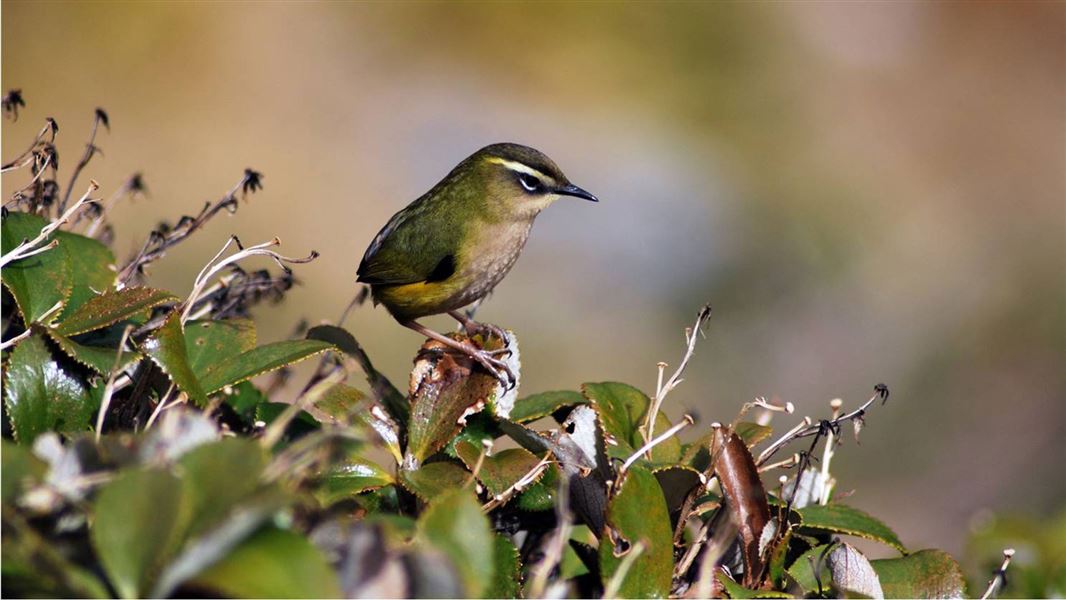By Erica Willkinson, Acting Threatened Species Ambassador and Sam Parsons, DOC Programme Lead – Climate Change Adaptation.
Originally published in The Guardian 22 January 2020.
As world leaders debate how to curb emissions to shape a better tomorrow, for New Zealand’s iconic wildlife the reality is clear - the environment they once thrived in has rapidly changed, and species must adapt to survive.
New Zealand is home to species found nowhere else in the world – a flightless parrot, a reptile as old as the dinosaurs, a bat which uses folded wings as ‘limbs’ to scramble around on the forest floor. The unique wildlife thrived on a landmass that was essentially a life raft separated from predators like rats and stoats for 80 million years. When British explorer Captain James Cook arrived in 1769, he said the birdsong was deafening. But when ships landed in the 1880s, bringing predators with fur and teeth, the native species withered under a relentless assault.
The result - New Zealand has been in a biodiversity crisis for more than 100 years.
Now, the added effects of climate change could tip our internationally important species over the edge.
2019 was New Zealand’s fourth warmest year on record, according to NIWA (National Institute of Water and Atmospheric Research). The sea levels are expected to rise, the dry parts of the country will get drier and the wet parts will get wetter.
We’re likely to see more storm surges on our coastlines, more extreme weather and more fires. There is no doubt climate change is making its presence felt in what is already an urgent battle to save New Zealand’s wildlife.
Our forest floors are hardening as temperatures rise and drought conditions hit. This means species such as our iconic kiwi are struggling to probe for food; the birds are having to venture out of their habitat for sustenance, leaving them vulnerable to cars, dogs or simply baking in the sun.
For the endemic long-tailed bat which roosts in trees, warmer winters may mean they spend less time in torpor (a state similar to hibernation). They may wake through winter more often, and either be unable to find food or be left vulnerable to the hungry rats surviving through warmer seasonal temperatures.
Warmer soil is also a problem for tuatara (pre-historic reptiles), as the sex of a tuatara egg is determined by the heat of the soil. If the soil temperature is just one degree warmer, tuatara are born male. What may seem like an insignificant change could wipe out a population.
In the alpine zone, increasing temperatures are allowing predators like rats and mice to get further up the mountains, allowing them to prey on the species previously out of their reach, such as rock wren, an alpine bird. These warming conditions are also allowing invasive plant species to grow at higher altitudes, reducing available alpine habitat. As temperatures rise, the species calling the alpine region home face an uncertain future.
It’s already too late for some species in the wild. When a huge storm was forecast to hit New Zealand’s West Coast in 2016, conservationists launched a rescue mission to collect as many remaining cobble skinks (a small reptile) as possible from the one tiny beach they lived. The skinks require a specific niche habitat of deep cobble immediately above the high tide mark, and with coastal erosion impacting their beach and nearby developments making migration impossible, the incoming storm could have wiped out the species. The skinks were flown to safety, and today the entire world’s population of the lizard sits patiently in Auckland Zoo waiting for a new habitat.
As climate change slowly introduces a ‘new normal’, urgent adaptation is needed to prevent losing much of New Zealand’s natural identity and generations of world leading conservation efforts.
Climate change is not solely responsible for the plight of New Zealand’s wildlife, but our at-risk species are already facing the cumulative effect of introduced predators, habitat loss and now the consequences of climate change mean in some cases it is adapt or die.
Kiwis will have to step up to help our native wildlife adapt to a new and sometimes hostile world; be it by helping them cope in a different home, or volunteering with environmental restoration and conservation efforts. We don’t yet know all the ways wildlife will need our help, but we have to be prepared to lend a hand as the world changes for all of us.
